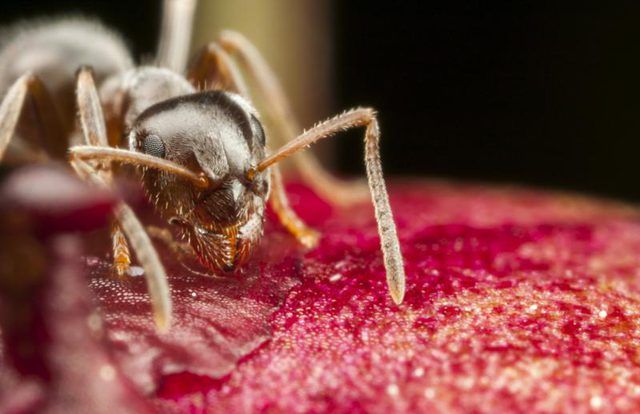Bulbs
Flower Basics
Flower Beds & Specialty Gardens
Flower Garden
Garden Furniture
Garden Gnomes
Garden Seeds
Garden Sheds
Garden Statues
Garden Tools & Supplies
Gardening Basics
Green & Organic
Groundcovers & Vines
Growing Annuals
Growing Basil
Growing Beans
Growing Berries
Growing Blueberries
Growing Cactus
Growing Corn
Growing Cotton
Growing Edibles
Growing Flowers
Growing Garlic
Growing Grapes
Growing Grass
Growing Herbs
Growing Jasmine
Growing Mint
Growing Mushrooms
Orchids
Growing Peanuts
Growing Perennials
Growing Plants
Growing Rosemary
Growing Roses
Growing Strawberries
Growing Sunflowers
Growing Thyme
Growing Tomatoes
Growing Tulips
Growing Vegetables
Herb Basics
Herb Garden
Indoor Growing
Landscaping Basics
Landscaping Patios
Landscaping Plants
Landscaping Shrubs
Landscaping Trees
Landscaping Walks & Pathways
Lawn Basics
Lawn Maintenance
Lawn Mowers
Lawn Ornaments
Lawn Planting
Lawn Tools
Outdoor Growing
Overall Landscape Planning
Pests, Weeds & Problems
Plant Basics
Rock Garden
Rose Garden
Shrubs
Soil
Specialty Gardens
Trees
Vegetable Garden
Yard Maintenance
How to Get Rid of Pharaoh Ants
How to Get Rid of Pharaoh Ants. The pharaoh ant (Monomorium pharaonis) apparently got its monicker from the mistaken notion that the insect was one of the plagues of ancient Egypt. Even so, this pest can still wreak havoc in your home if it finds its way inside. Native to tropical climates and now found all over the United States, the pharaoh ant...

The pharaoh ant (Monomorium pharaonis) apparently got its monicker from the mistaken notion that the insect was one of the plagues of ancient Egypt. Even so, this pest can still wreak havoc in your home if it finds its way inside. Native to tropical climates and now found all over the United States, the pharaoh ant is one of the hardest ants to control because a colony starts budding, or splitting up to form several new nests, if you treat them with traditional ant-controlling insecticides. Using ant baits and taking exclusionary measures are the only effective ways to control pharaoh ants indoors.
Effective Ant Baits
Pharaoh ants will eat almost anything, including fatty foods, dead bugs, pet food, toothpaste and even soap, but they also have one heck of a sweet tooth. Using a bait that combines a sugary base along with a fatty substance and a toxic chemical gives you optimal pest control. Look for a bait product that lists boric acid, sulfonamide or hydramethylon as the active ingredient. Those nonrepellent chemicals won't cause colonies to start budding and should act slowly enough that the foragers have time to get back to the nest and share their lethal goodies with colony members before dying.
Avoid using ant-killing products containing permethrin, indoxacarb, propoxur or cyfluthrin. Those fast-acting chemicals do nothing to control pharaoh ant colonies because they kill the tiny foragers before they can make it back to the nest. Ant baits come in various formats, including granules, gels and liquids, but ready-to-use bait stations are the easiest to use.
Placing Baits
Place ant bait stations along foraging trails, but don't block the trails themselves. Like other ant species, the pharaoh ants have well-defined trails from the nest to water and food sources. Disrupting the path confuses the ants, and they probably won't take the bait back to the colony. Experts at the University of California Statewide Integrated Pest Management Program recommend placing bait in cabinet corners and pantries, near stoves or ovens, around toilets and plumbing pipes and beneath kitchen and bathroom sinks. Avoid placing any kind of bait where small children or pets can get into it. After handling bait products, wash your hands with soap and water.
Cleaning Up
Baits work most effectively when they don't have to compete with other food sources. Wipe down counters and the interior of cabinets and pantries to ensure no crumbs or spills remain. Don't leave any dirty dishes in the sink overnight. Vacuum and mop daily during an infestation to get rid of tiny food orts that attract pharaoh ants. Store food products in glass or plastic containers that close tightly.
Keep sweet substances, such as honey, syrup and sugar, in your fridge until you get rid of the ants. Before storing or recycling bottles and cans, wipe them off with soapy water to get rid of food residue. Keep trash cans clean by lining them with plastic trash bags that you discard daily.
Excluding Pharaoh Ants
Tiny pharaoh ants frequently use little holes near pipes and wires to get inside, so seal those openings with a silicone-based caulk. Apply weather stripping around windows and doors and make sure there are no tears in the screens. Placing sugar- and fat-based ant baits around the outside of your house can draw the pharaoh ants out of your home. Set bait stations along observed trails near doorways, around windows, along flower boxes or beds and across porches, patios or decks. If you can't find the pests' entry points, set out bait stations every 10 to 20 feet along the perimeter of your home's foundation.
A Few Considerations
Pharaoh ants only reach about 1/16 inch in length and have light brown, pale yellow or red bodies. Thief ants (Solenopsis molesta) look almost identical to to pharaoh ants, but the former have two segments on their antennae and the latter have three. If, like most people, you don't want to study the ants that closely, you can often tell you have thief ants if the sugar-based bait you set out for the pharaoh ants just doesn't work. Thief ants prefer greasy foods over sweets, so use a fat-based bait station to control these pests. Place the bait along foraging trails and near nesting sites, which commonly include inside tiny wall cracks, inside cabinets, beneath counters and behind baseboards.
As always, read and follow the instructions on the product's label, and avoid leaving bait within the reach of pets and small children.